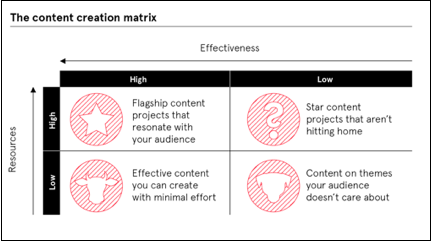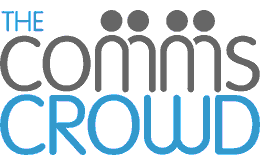The Importance of Building Trust in the World of Regtech
Time to read: 2 minutes
Lauren Bowden, Fintech content lead at The Comms Crowd looks at the opportunities and challenges facing Regtech firms, and the role trust plays in ensuring future success.
When the term Regtech burst onto the scene around circa 2015, it was met with mixed reaction. Some took the cynical path – simply as spin for existing regulatory technology vendors who have been in the business for years to benefit from Fintech’s halo effect. Others saw it as a way for new start-ups to shake things up, offering more cost-effective and agile SaaS-based solutions to post-GFC problems.
Seven years later, with the market projected to reach around USD 33.1 Billion by 2026, countless players are thriving in all areas from tax to cannabis. Established vendors are now embracing the portmanteau with open arms and investing in more flexible forward-looking business models – few would dispute that Regtech is here to stay.
That said – there are still a fair few hurdles these firms need to jump before they can realise their full potential. According to the FCA, one of the most active regulators supporting this burgeoning market, it all comes down to trust:
“The trust element is ingrained in the complex ‘business case for RegTech’ – RegTech firms need to convince firms to allow them to work with their most sensitive data assets and systems in order to solve their problems.”
Policies, procedures, and – most importantly – legal documentation go a long way to ensure sensitive data assets and systems remain safe. But before anything gets signed, to get even a toe in the door Regtech firms need to find ways to demonstrate trustworthiness. Of course, trust needs to be embedded internally first, through a solid culture, stemming from the top down and cultivated by HR, but it needs to be demonstrable externally too, especially in such a crowded market. And this can be achieved with transparent marketing communications.
- For start-ups when there’s a multitude of moving parts at any one time, external communications should be planned carefully and not rushed. Investing in building relationships with the trade journalists forms the beginning of your journey and is always time well spent, as these independent and credible sources are always essential conduits to getting news out when the time is right.
- For more established vendors looking to move into the Regtech space, a solid analyst relations programme should be at the heart of any product roadmap. Honest, open, and regular dialogue with the gatekeepers of those ever-important magic quadrants, waves, or rankings should be prioritised.
- Solid content marketing and a strategic social media plan including blogs, e-books, infographics, whitepapers, and other high value content shared directly with prospects and customers or distributed over curated social media accounts like LinkedIn can work at any size or type of Regtech firm. That is provided it speaks authentically to the right audience, and that content is relevant, it adds value, and is not overtly promotional. And with the amount of change inherent in the regulatory landscape, the opportunities for subject matter experts to demonstrate thought leadership and guidance are plentiful.
There is a whole arsenal of comms tools that Regtech firms can employ at various stages of their evolution, but the art is knowing when, what, how and to whom. Working with marketing communications professionals who understand the nuances of this complex, jargon-filled environment, as well as how to make the message hit home will ensure their voice is heard in this very crowded marketplace.
Finding my Place in the Freelancing World

Time to read: 2 minutes
Lauren Bowden, head of FinTech Content Marketing, reflects on following her heart and landing on her feet…
It is coming up to 18 months since I took the plunge and left full time employment to start freelancing. Unable to mentally and physically continue along the corporate path that I thought I was destined to walk, it almost felt like I was in free-fall when I left. It was weird, scary, and completely alien to me. I have been an employee of a company – whether that’s a dry cleaner, an IT helpdesk, or a multinational corporate – since I was 15.
What the hell was I thinking?
My descent into panic was in full flow. That was until I met up with my first ‘proper’ boss, mentor and all round great mate Sam Howard. Meandering around Regent’s Park with her delightful dog Dill on a lovely early summer’s day. Off-loading my stress, sharing war stories and catching up on RuPaul’s Drag Race (as you do), it emerged that Sam could have a spot for me in her Crowd.
I quickly realised the opportunity. The freedom of a freelance life with the stability of a trusted team handling a stream of sterling clients, and still able to pay the bills? Obviously, I grabbed it with both hands.
Next task was to find out where I fit. My most recent role as content marketer meant that I was five years out of the journo-PR loop, so I was no use there. I touched analyst relations extremely lightly, mainly as cover for a colleague on maternity leave – also roughly five years ago. No good there either.
Having already made the biggest leap in my career so far, I decided to stick with that approach and dive head-first into wherever I could be of use. That turned out to be as a writer. Who knew? Well, me, a bit. I have always enjoyed writing. And there was obviously plenty of writing throughout both my PR and Marketing jobs. But to be positioned as ‘the writer’ was a little daunting, to say the least.
Confidence with my new moniker started to build soon enough. Compliments from discerning clients, minimal edits from some of the best writers I have ever worked with. And then the clincher.
A psychometric test from Comms Crowd client Capp revealed, from assessment of strengths, skills, preferences, cognitive ability, personality, values and experience and using 100m+ data points, revealed that out 60 potential ‘types’, top of the list was, yep you guessed it…a writer.
Specifically, it told me that:
“You enjoy writing, finding a deep fulfilment in writing things for others to read. You have a natural ability to communicate through writing. The act of writing helps you to clarify your thoughts, so you write clearly and easily. Use wisely – you are likely to get pleasure from all types of writing – even emails!”
Overall, I would say that has been my experience over the last year and a half. Obviously, I have had my fair share of writer’s block, and I have come down to the wire with deadlines more than once. Luckily, I have also been extremely privileged to have interesting clients and incredible proof-readers/sub-editors to help me through it.
It’s also not all been writing. I have continued to create ‘content’ as part of the Crowd and my own clients. Yes, the other C-word that may as well be a swear word these days. I stand with friend-of-the-Crowd Ian Truscott’s view on this, as outlined in his excellent blog: “If you are managing a content process, it’s no different if the piece of content is a PDF datasheet, a YouTube “how-to” video, a set of instructions, or a blog post. It’s a unit of content traveling along a content supply chain from creator to consumer that should be optimised.”
Of course, I can’t be as involved in the strategic plans as I was client-side, but I have been able to use that experience to advise on content marketing pieces across all phases of the sales cycle. And I’ve loved it.
What I have figured out is whatever label we attach to what we do – whether it’s the written word in a thought leadership piece, audio in a podcast, visuals in an infographic – what it comes down to is good story telling delivered in the right place at the right time. That is what the Crowd do best. And I am thrilled to be a part of it.
Five tips for Building a Solid Content Marketing Plan
Time to read: 3 minutes
Lauren Bowden, who looks after FinTech Content Marketing here at The Crowd, draws on her in-house experience to outline the foundations of a solid content marketing plan.
 I moved into a content marketing role around six years ago after a decade as a PR practitioner, and while certain aspects of the two disciplines were very similar – story crafting, messaging, creativity, etc. – my eyes were fully opened to the commercial side of the business and how the various parts of an organisation fit together. Earlier this year I was asked to be one of 11 content marketing experts to participate in an eBook on ‘using the content lifecycle to maximise content ROI’. Below is a summary of my contribution, with some additional insight I have gathered recently.
I moved into a content marketing role around six years ago after a decade as a PR practitioner, and while certain aspects of the two disciplines were very similar – story crafting, messaging, creativity, etc. – my eyes were fully opened to the commercial side of the business and how the various parts of an organisation fit together. Earlier this year I was asked to be one of 11 content marketing experts to participate in an eBook on ‘using the content lifecycle to maximise content ROI’. Below is a summary of my contribution, with some additional insight I have gathered recently.
1. Pool your knowledge
The FinTech sales cycle can easily take around 18 months and usually involves a plethora of decision-makers that marketeers need to know all about in order to best target their content marketing campaigns. It requires serious teamwork and buy-in from all key stakeholders, not just the sales team who often are positioned as the only conduit to the client and therefore the main go-to for marketing. Professional services team members have invaluable on-the-ground insight into the daily dealings at client sites, while product management ideally has a macro view of the industry and can point to future trends, so tapping into their knowledge is crucial when devising a content marketing plan.
2. Do your research
It is rare that only one product or solution will need to be pushed to the market through the course of the year and so content marketing plans should be drawn up for each area of focus. Some plans will be more detailed than others to reflect the organisation’s priorities, but at the very least they should cover information on market drivers, solution description, key messages, target market, buyers’ journey mapping, key competitors, challenges, localisation plans and a content calendar. This will take time but always pays dividends when it comes to managing workloads and budget effectively, and ultimately measuring effectiveness over the year.
3. Plan well – but leave some room to wiggle
Budgeting requires you to have a clear idea of the goals you need to achieve in each campaign—goals that have been communicated to and accepted by stakeholders. This does not mean planning and budgeting for every detail of every content piece with no wiggle room over the year. Even the most robust plan and organised team will have unexpected opportunities that are too good to pass up over the year. That’s why it’s always important to have at least a 10 percent contingency built into the budget.
Another benefit of a strong content plan is that it helps you manage supplier costs. With a well-thought-out plan, many items can be budgeted for upfront, suppliers notified in advance about what work you have planned over the year, and packages negotiated accordingly, giving you a bigger bang for your buck.
It is also crucial to keep up to date with your existing suppliers’ new offerings, and to explore the marketplace for other suppliers who can help you execute new tactics. This kind of market scanning is particularly important for in-house marketing teams so they can keep abreast of the latest techniques and methods.
4. Embrace the data
Making sure you’re hitting the right audiences with your content can be a challenge, especially when you are targeting multiple stakeholders who make decisions as a group. When you look back on this kind of win, it’s difficult to pinpoint the influence specific content pieces had on that sale. You’re not going to turn around to a salesperson after an 18-month-long sales process and tell her the real reason she got that deal was because of a video or white paper – unless you want to be laughed out of the sales meeting.
Marketing Technology (aka MarTech) can be your best friend here. Whether it’s CRM, marketing automation or content management systems, they can be crucial in making sure content is getting into the hands of key audiences. For example, you can build up a picture of what is happened during a sales cycle with CRM data. Retrospective analyses can reveal how many people in an organisation engaged with which content pieces. When it turns out that 12 different people from the same firm have all clicked on multiple pieces of content, or if the person clicked on multiple pieces of content, you have a much stronger case to prove your campaign’s effectiveness.
If the content is not hitting the mark – messages are either not reaching their targets or they are simply not resonating – it’s essential that tweaks are made on the fly. This shouldn’t happen too much with campaigns that are well thought out at the planning stage. However, sometimes you must adjust, try different things and then stay in constant communication with campaign stakeholders to ensure you remain on the right path.
5. Stay curious
Another useful tool to help you dive deeper into campaign effectiveness was shared by Raconteur Media recently. They applied the well-known BCG Matrix to the business of content creation:

Figure 1 Content Creation Matrix from Raconteur Media
The general guidance with this is that you milk the cows to feed the stars. That is, dedicate around 70 per cent of your resources to creating more of your best performing content types, positioning them prominently in the customer journey and optimising the process as much as possible.
Set aside the remaining 30 percent of resource budget for experimentation. Depending on your appetite for risk, you might split this allocation further between moderate‐ and high‐risk activities.
At The Comms Crowd we can not only help you create winning content pieces but can also work with you to plot those pieces along your customer journeys and find out the best way to resonate with the right decision-makers at the right time. Email us to find out more.

